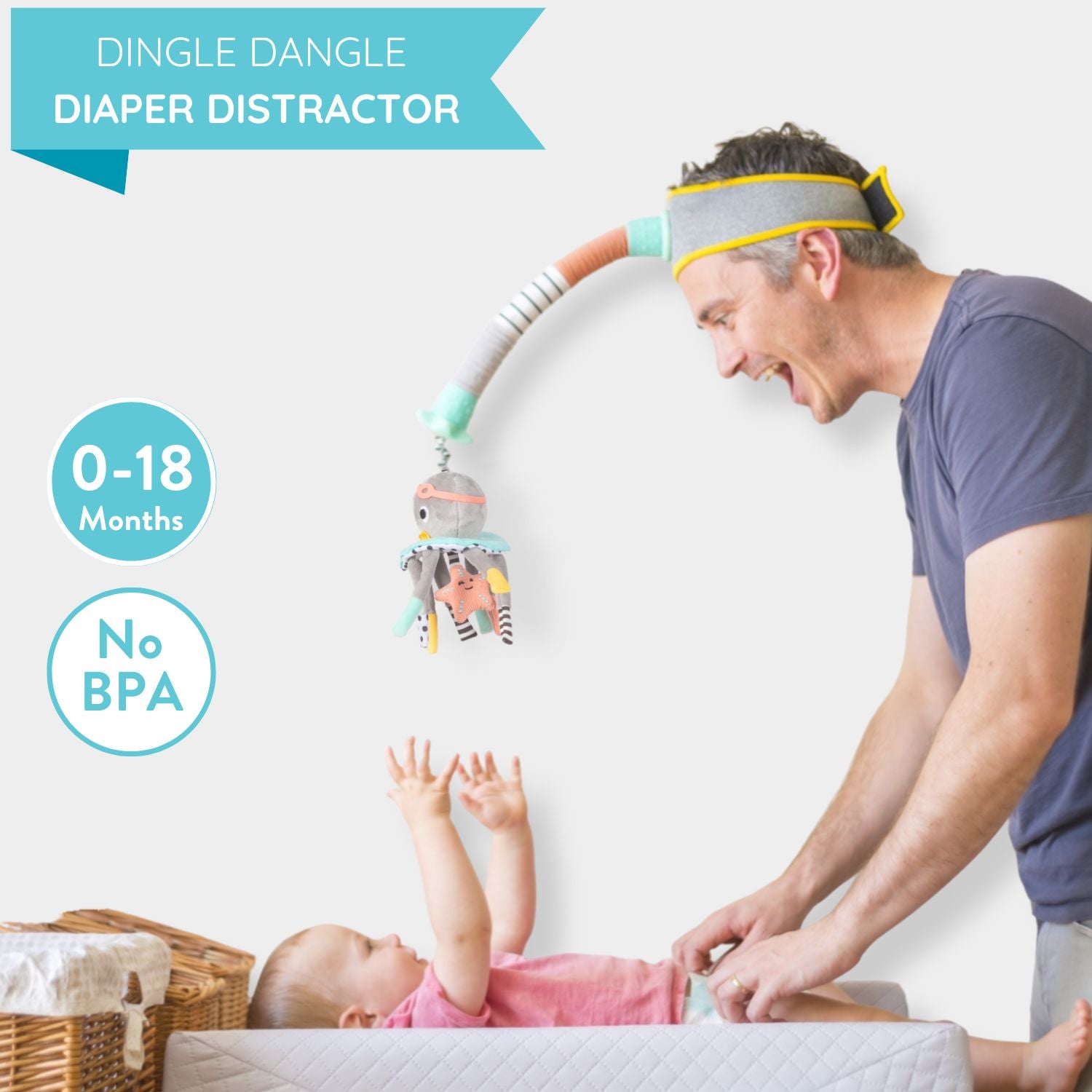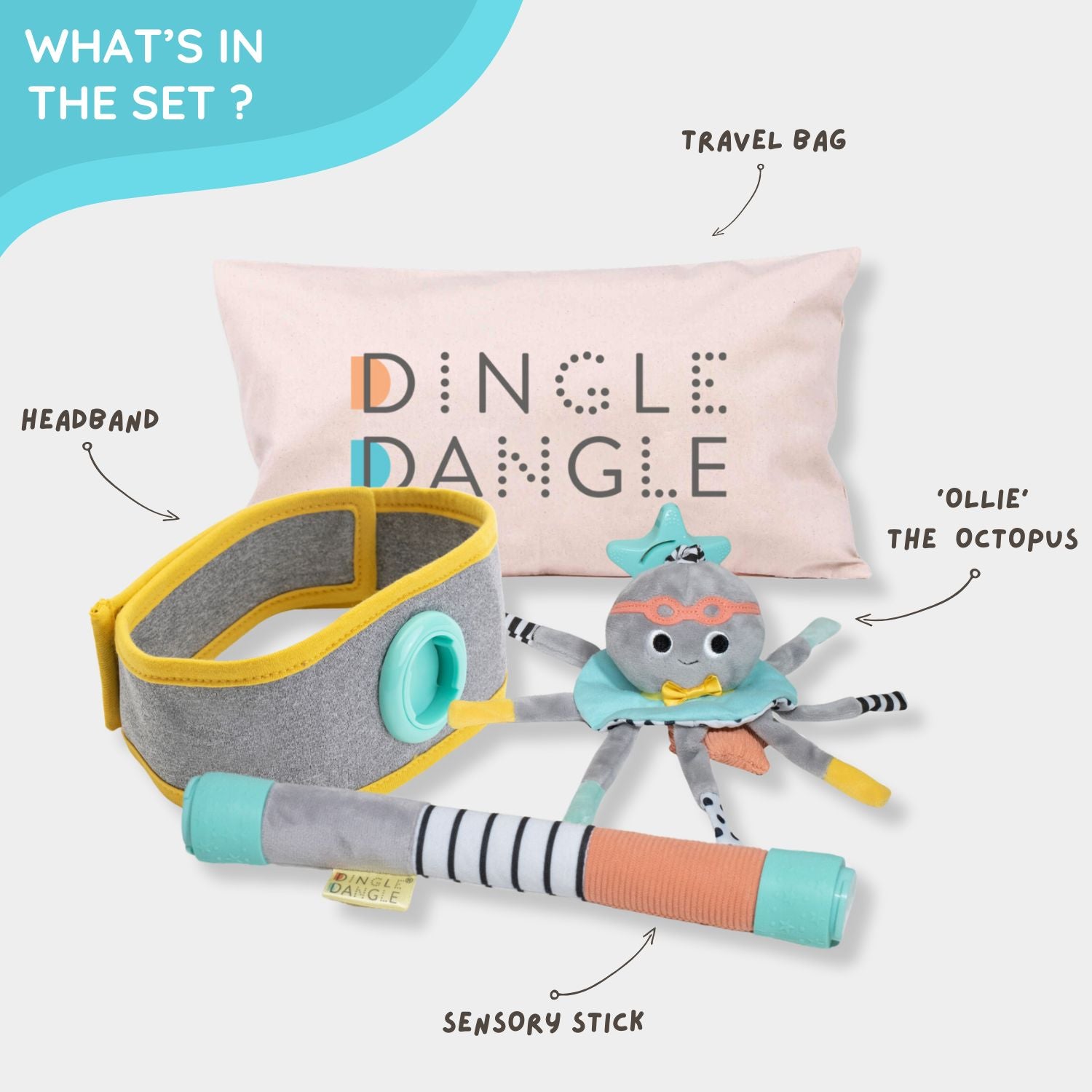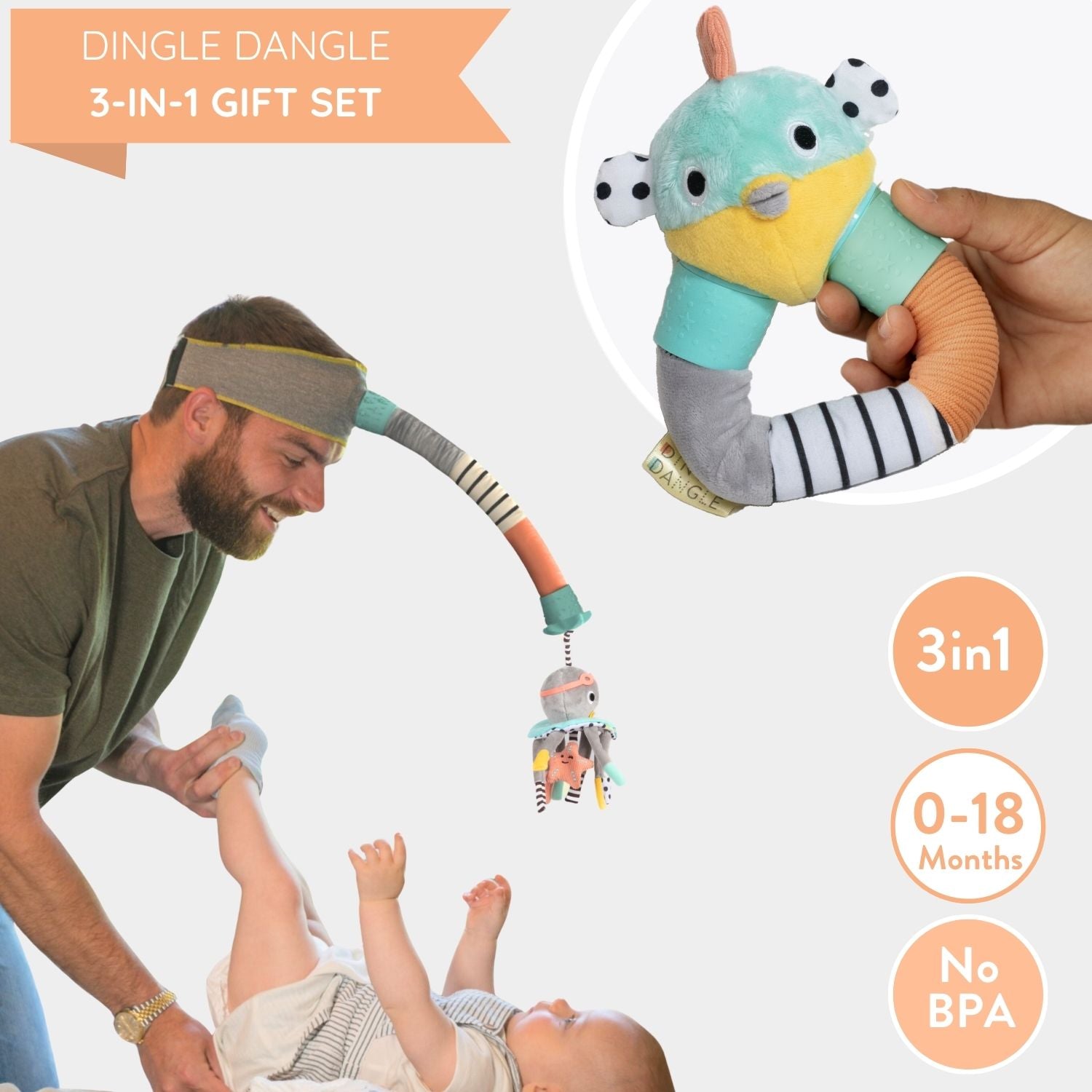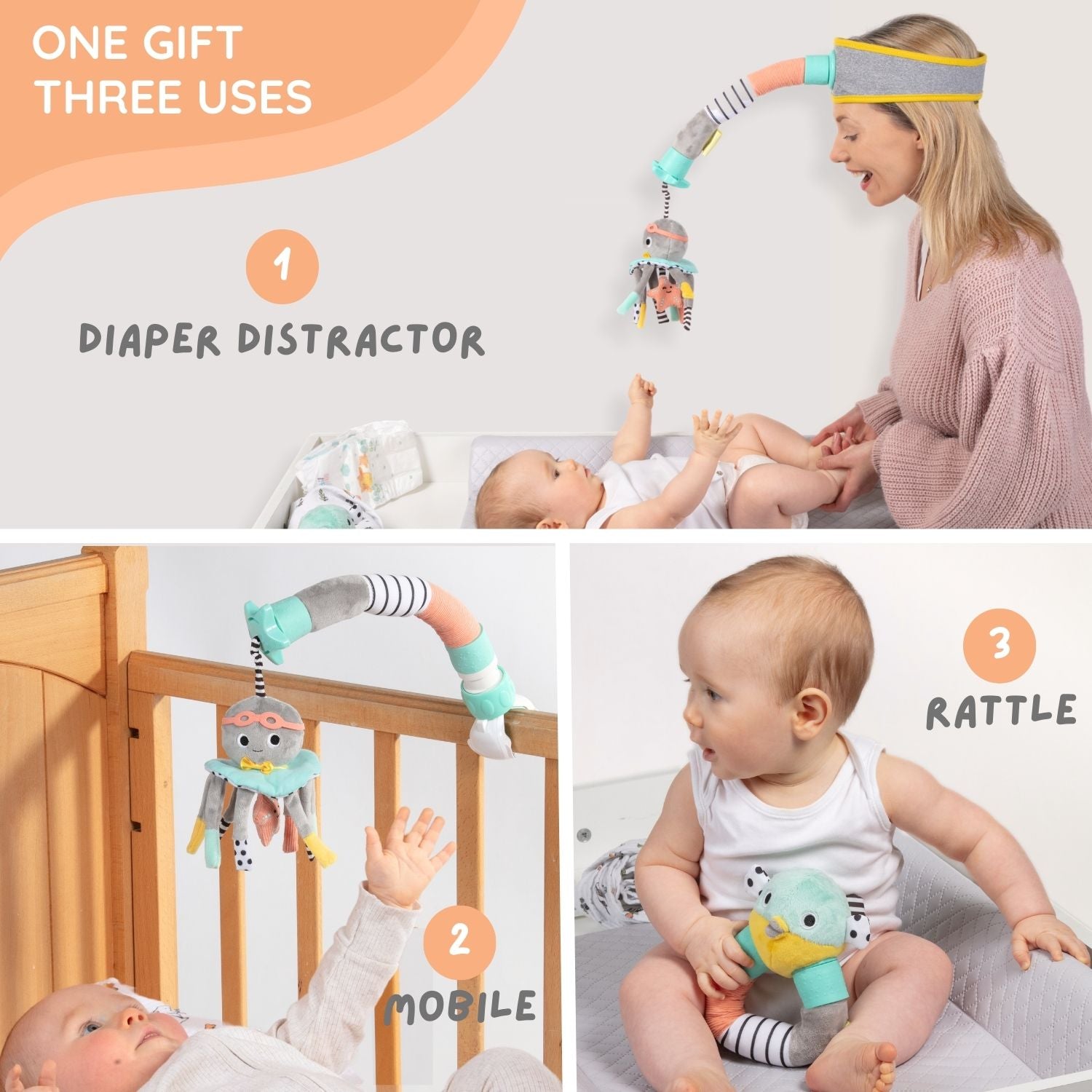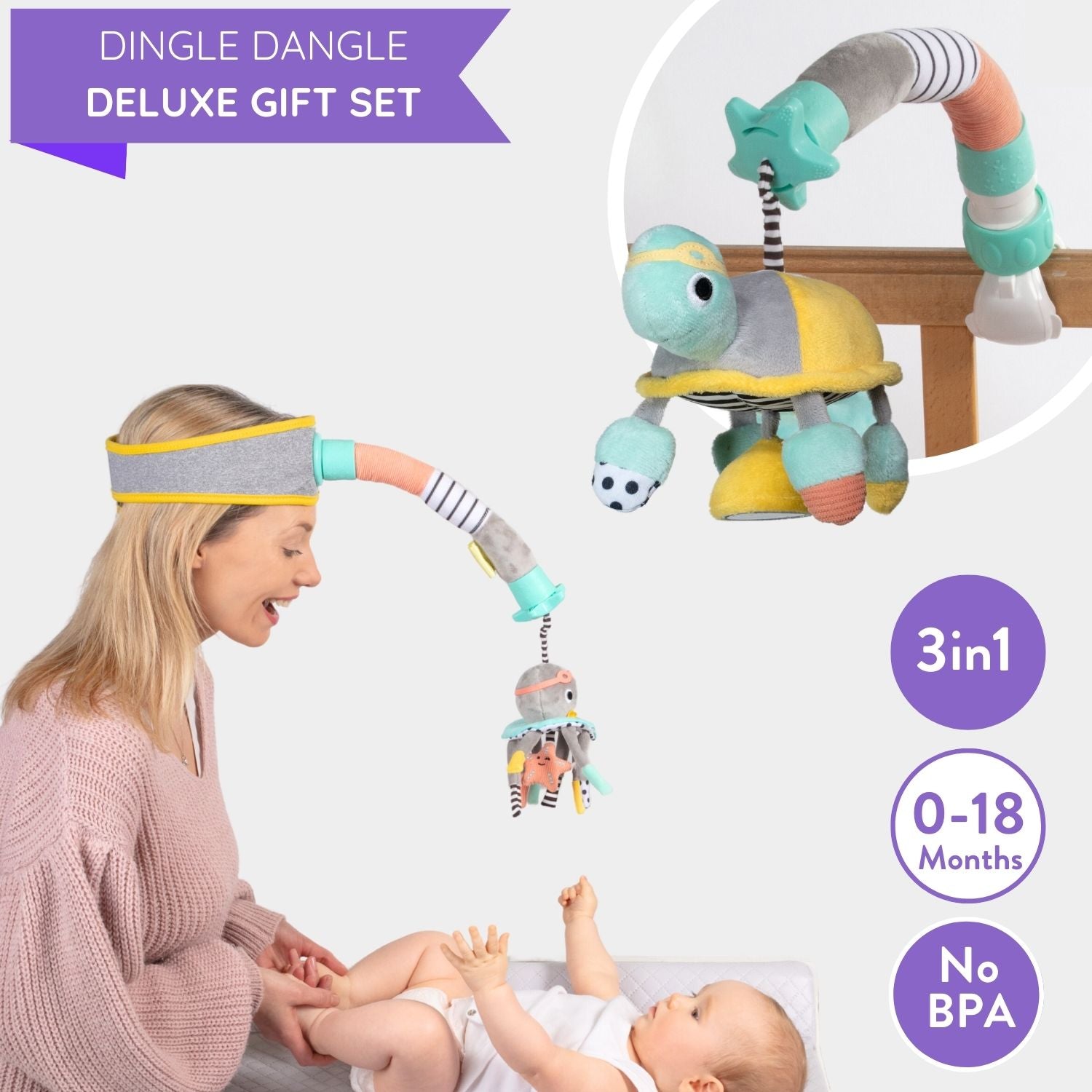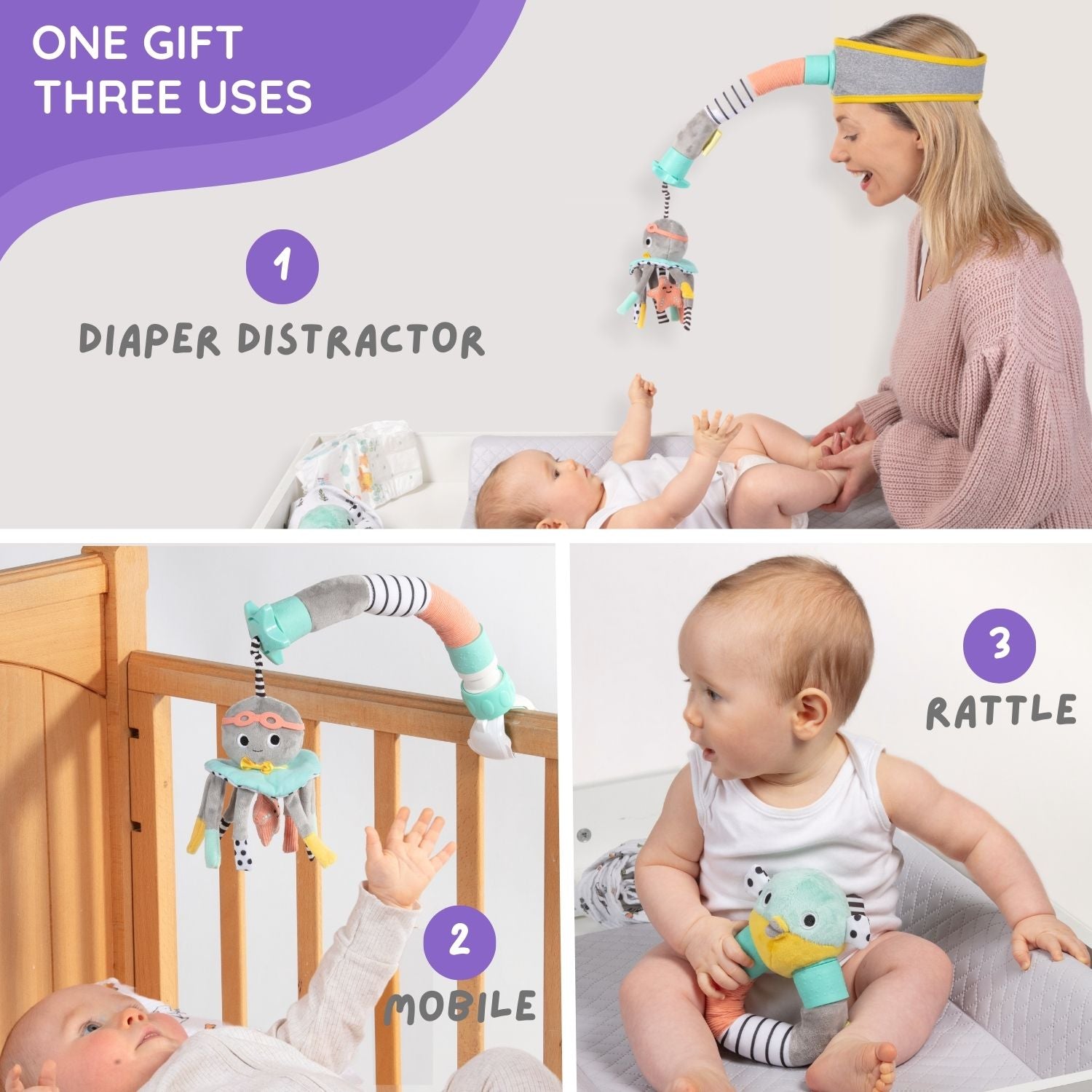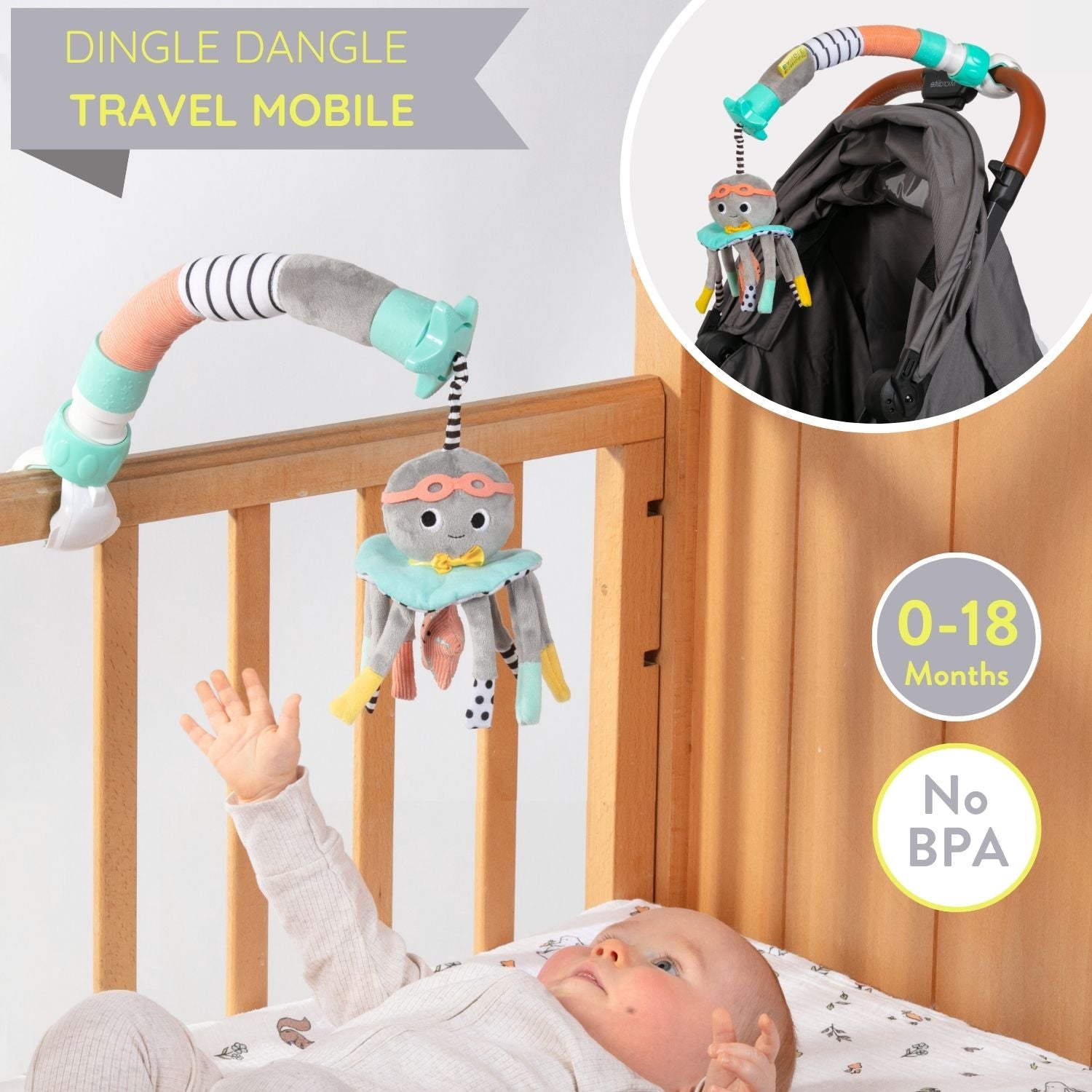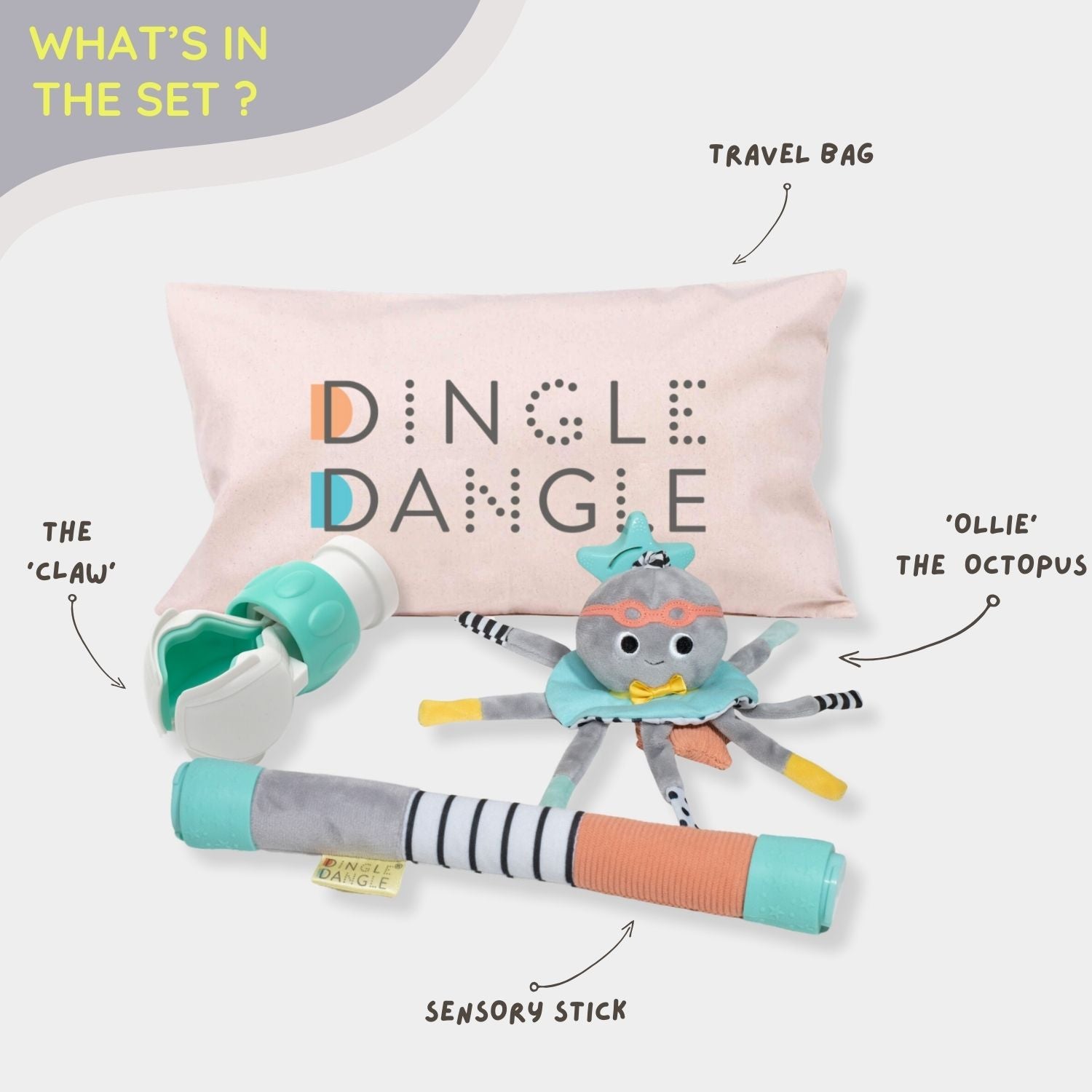![What Are STEM Toys? [Beginners STEM Toy Guide] - The Dingle Dangle](http://www.dingledanglebaby.com/cdn/shop/articles/Reviews_1.jpg?v=1651100801&width=2000)
![What Are STEM Toys? [Beginners STEM Toy Guide] - The Dingle Dangle](http://www.dingledanglebaby.com/cdn/shop/articles/Reviews_1.jpg?v=1651100801&width=2000)
· By Stewart Gold
What Are STEM Toys? [Beginners STEM Toy Guide]
Have you ever heard of a STEM toy? If so, do you know what “STEM” stands for?
If you haven’t heard of STEM toys - don’t feel bad. Even most parents who have heard of STEM toys don’t know what “STEM” stands for … or why STEM toys can be so important for your child’s physical and cognitive development.

Today, we’ll help you answer a few questions that will help you better understand STEM toys. We’ll explore:
- What Does “STEM” Stand For?
- What Are STEM Toys?
- Is There a Universal Standard for STEM Toys?
- Why Are STEM Toys Good for Children?
- Examples of STEM Toys at each age.
Ready to learn? Let’s go!
What Does “STEM” Stand For?
Before we learn about STEM toys, we need to know what STEM stands for. Simply put, STEM stands for:
Science
Technology
Engineering
Mathematics
The term STEM is typically used in the context of learning and education. It is based on the principle that students must be well-equipped in the fields of science, technology, engineering, and mathematics in order to compete in the modern-day workforce.
For those interested in a more academic definition, a widely-used definition of STEM is:
[STEM is] an interdisciplinary approach to learning where rigorous academic concepts are coupled with real-world lessons as students apply science, technology, engineering, and mathematics in contexts that make connections between school, community, work, and the global enterprise enabling the development of STEM literacy and with it the ability to compete in the new economy.
Over the years, the STEM model has evolved to include other meaningful areas such as Art (“STEAM”) and Reading (“STREAM”).
By combining these high-impact subjects into one cohesive approach, children receive a holistic learning experience that prepares them to succeed in postsecondary education and a competitive global workforce.
What Are STEM Toys?
Now that we know what “STEM” means, let’s answer:
What are STEM Toys?
Stem toys are toys based on the four disciplines of Science, Technology, Engineering and Math. STEM toys are geared towards learning, curiosity, and cognitive development with a clear focus on the STEM disciplines.

STEM toys can be broken down into three main categories:
1) Academic: Focus heavily on math, science, and language development;
2) Cognitive Thinking: Promote problem-solving, critical thinking and logic; and
3) Motor Skills: Made for younger children, target physical, fine and gross motor skills and hand-eye coordination.
STEM toys are toys thoughtfully designed to teach, develop and reinforce fundamental STEM-based skills and concepts. They can be geared for independent play, side-by-side with other children, or require adult supervision.

STEM toys tend to be highly interactive. They require children to be fully hands-on and encourage a mindset of “learning by doing.” This child-friendly process is what makes STEM toys enjoyable, challenging, and interesting.
Now that we know what STEM toys are, let’s find out why STEM toys are so great for children.
Why Are STEM Toys Good for Children?

The human brain grows and develops at an unprecedented rate during the first 8 years of life. STEM toys can be an essential supplement to formal education to support a child’s cognitive development.
STEM toys allow children to “tinker”. Tinkering is an important way that children learn about the world around them. STEM toys give children the space to explore the interconnectivity of their surroundings and actively problem-solve in real-time.
There are many cognitive and physical benefits of STEM toys to a child’s growth and development:
Critical Thinking

Interacting with STEM toys encourages kids to be creative and develop problem solving skills.
Unlike many baby toys that have little or no problem-solving attributes, STEM toys have cause-and-effect triggers that teach babies and children how to problem solve.
For example, some STEM Toys (like the one pictured above) have cause-and-effect features that teach kids not only critical thinking skills, but hand-eye coordination.
Hand-Eye Coordination
Children who are exposed to STEM toys at a young age will naturally develop hand-eye coordination. Through tinkering and building, children discover the connection between what they see with their eyes and what their hands are able to do.
Spatial Awareness
Spatial awareness is a term that describes how people (in this case children) organize objects in the world around them.

Research studies have shown a strong correlation between construction play and spatial skills. Children who play with STEM toys show a greater interest in construction and tend to outperform their peers in mental rotation and spatial visualization.
World Readiness
Research shows that exposing children to quality STEM concepts is a key predictor to a child’s success in school.

Personal interest, experience, and enthusiasm are critical to supporting children’s learning and STEM toys can be a pathway for long-term interest in science into adulthood.
Importantly, the need for STEM education has never been greater. STEM occupations are growing at 24%, while other occupations are growing at 4%.
It’s critical that parents and teachers embrace STEM learning to help set the next generation of children for success - not only throughout school years, but also in their professional career journey.
Is There a Universal Standard for STEM Toys?
There is no standard certification to identify whether a toy is a “STEM” toy or not. Unfortunately, there is also no symbol or icon that will let parents know if a toy really promotes Science, Technology, Engineering and Math (STEM) principles.

However, if you are looking for a STEM toy for your own child or looking for a gift for a loved-one or friend, there are a number of places you can find great STEM toys that are chosen by experts in the field. We recommend:
- The website STEMGeek is solely dedicated to identifying STEM-based toys for children. They offer unique lists of the best STEM Toys in articles like: “15 Unique STEM Gifts For Kids in 2021” and “8 Toys for Hand-Eye Coordination”.
- Smithsonian Magazine includes an enlightening article where engineers pick the 10 best STEM toys on the market.
- On Wired.com you can find “13 Smart STEM Toys for the Techie Kid in Your Life”.
What’s important when buying any STEM toy is that the toy is age-appropriate as many STEM toys are designed to be played with by kids from a very specific age or ability range.
It’s always wise to check the packaging (or online details) and read reviews to see if the STEM toy is a good fit for your child.
Examples of Popular STEM Toys
STEM-education can be extremely impactful when introduced at an early age. It is all about meeting children where they are – socially and developmentally.
Below are some of the Best STEM toys to consider for different age groups:
STEM TOYS FOR BABIES (0-18 months)

The first year of life is full of changes. The best types of toys for this age group are sensory toys, ones that engage any/all of the 5 senses – sight, smell, sound, taste and touch.
- Baby Sensory Toys: Toys that encourage use of the senses - particularly sight, sound and touch are amazing for early baby development. An award-winning sensory baby toy like the Dingle Dangle (pictured above) is an incredible way to gently stimulate baby’s sensory development.
- Baby Mobiles: Mobiles can be placed above cribs, changing areas and/or strollers. Not just for diversion, a mobile’s gentle movement and images can help focus eyesight, elicit movement, and promote coo-ing.
- Rattles: At this age, babies work hard to coordinate their arms, hands, and fingers. With safety top of mind, opt for rattles that are soft, easy to hold and can be easily washed clean.
- Sensory Mats: Especially in the first 6-months, building head, neck and core strength are major physical milestones. Pairing tummy-time on an activity mat can offer a lot of sensory stimulation as some have tethered age-appropriate sensory toys, interactive components, music and/or lights.
STEM TOYS FOR TODDLERS (1-4 years old)
For this age group, consider STEM toys that build upon sensory stimulation but also promote problem-solving and creativity.

- Blocks: Although simple in design, with blocks, play possibilities are endless. Toddlers can stack them high, knock them over or group them based on color or size. Mix them in with other sensory items like pom-poms, crumbled paper, mini bells, or small stuff animals to foster higher-thinking order.
- Cause and Effect Toys: Toddler’s find amazement and wonder when they realize their actions cause a reaction! Look for toys that require pressing buttons, pulling strings, or turning wind-up handles. Even playing with bubbles reinforces this concept and is always a big hit!
- Make Believe Kits: Tap into a toddler’s wonderous imagination with child-friendly doctor, chef, or construction kits. Spend quality time getting into character and engaging them with STEM-like questions like “where’s Harper’s heart” or “let’s check daddy’s temperature!” Ask them to “help fix a broken toy” or surprise their big brother with a pretend hamburger.
STEM TOYS FOR YOUNG CHILDHOOD (5-8 YEARS OLD)
Follow your child’s lead when beginning to introduce more involved and complex STEM toys.

- Robots: Robots can teach basic problem solving, computer programming and coding skills. Popular Mechanics compiled a comprehensive list of robots that are intuitive and informational for this age group.
- STEM Kits: There are many different STEM Kits available on the market. Some are one-time projects whereas others are on a subscription model. These kits challenge children to follow directions, make a hypothesis, ask questions, and test out various experiments.
- LEGOS: LEGO bricks are extremely popular for young children. Whether they are building pre-determined structures or creating their own, they are activating STEM concepts of engineering, architecture, design, and creativity.
- App-based games: Nowadays, parents are aware of the dangers of too much screen time. Therefore, the overarching goal is making any screen time, meaningful. Using a computer or tablet, the Apple app store has a library of “STEM Apps for Kids” which offer engaging games like “Coding for Kids,” “DNA Play,” and “Math Tango.”
What Are STEM Toys? Now You Know the Answer
Taking just five short minutes to read this article, you now should be able to answer questions:
- What are STEM Toys
- Why are STEM Toys good for my child; and
- Examples of STEM Toys at different ages
The key takeaway is that introducing STEM toys and sensory toys at an early age can help empower children to become inquisitive, science-minded, and well prepared to understand the world around them.
Who wouldn't want that for their child?
SOURCES:
Britannica.com, “STEM Education Curriculum,” accessed via https://www.britannica.com/topic/STEM-education
The Journal.com, “Educational Toys Market Expected to Grow 10 Percent through 2021,” accessed via https://thejournal.com/articles/2017/07/18/educational-toys-market-expected-to-grow-10-percent-through-2021.aspx
Centers for Disease Control and Prevention, article entitled “Early Brain Development,” accessed via https://www.cdc.gov/ncbddd/childdevelopment/early-brain-development.html
National Association for the Education of Young Children, article entitled, “STEM Starts Early!,” accessed via https://www.naeyc.org/resources/blog/stem-starts-early
United States Department of Commerce, “STEM Jobs: 2017 Update,” accessed via https://www.commerce.gov/data-and-reports/reports/2017/03/stem-jobs-2017-update
National Science Teaching Association, article entitled “STEM Education and Learning,” accessed via https://www.nsta.org/nstas-official-positions/stem-education-teaching-and-learning
Healthline.com, article entitled, “Get Ready for All These Precious First-Year Milestones,” accessed via https://www.healthline.com/health/baby/baby-development-stages
AllIsOnFors.com, article entitled, “Engaging Cause and Effect Toys for Early Development,” accessed via https://allisonfors.com/engaging-cause-and-effect-toys/
Popular Mechanics, article entitled, “9 Best Robots for Kids that Make Learning STEM Fun, “ accessed via https://www.popularmechanics.com/technology/robots/g24516168/robotics-for-kids/
STEMEducationGuide.com, article entitled, “13 Awesome (& Educational) STEM Subscription Boxes for Kids, accessed via https://stemeducationguide.com/subscription-boxes-for-kids/
American Academy of Child and Adolescent Psychiatry, article entitled, “Screen Time and Children,” accessed via https://www.aacap.org/AACAP/Families_and_Youth/Facts_for_Families/FFF-Guide/Children-And-Watching-TV-054.aspx
App Store. “STEM Apps for Kids,” accessed via https://apps.apple.com/us/story/id1454330950

